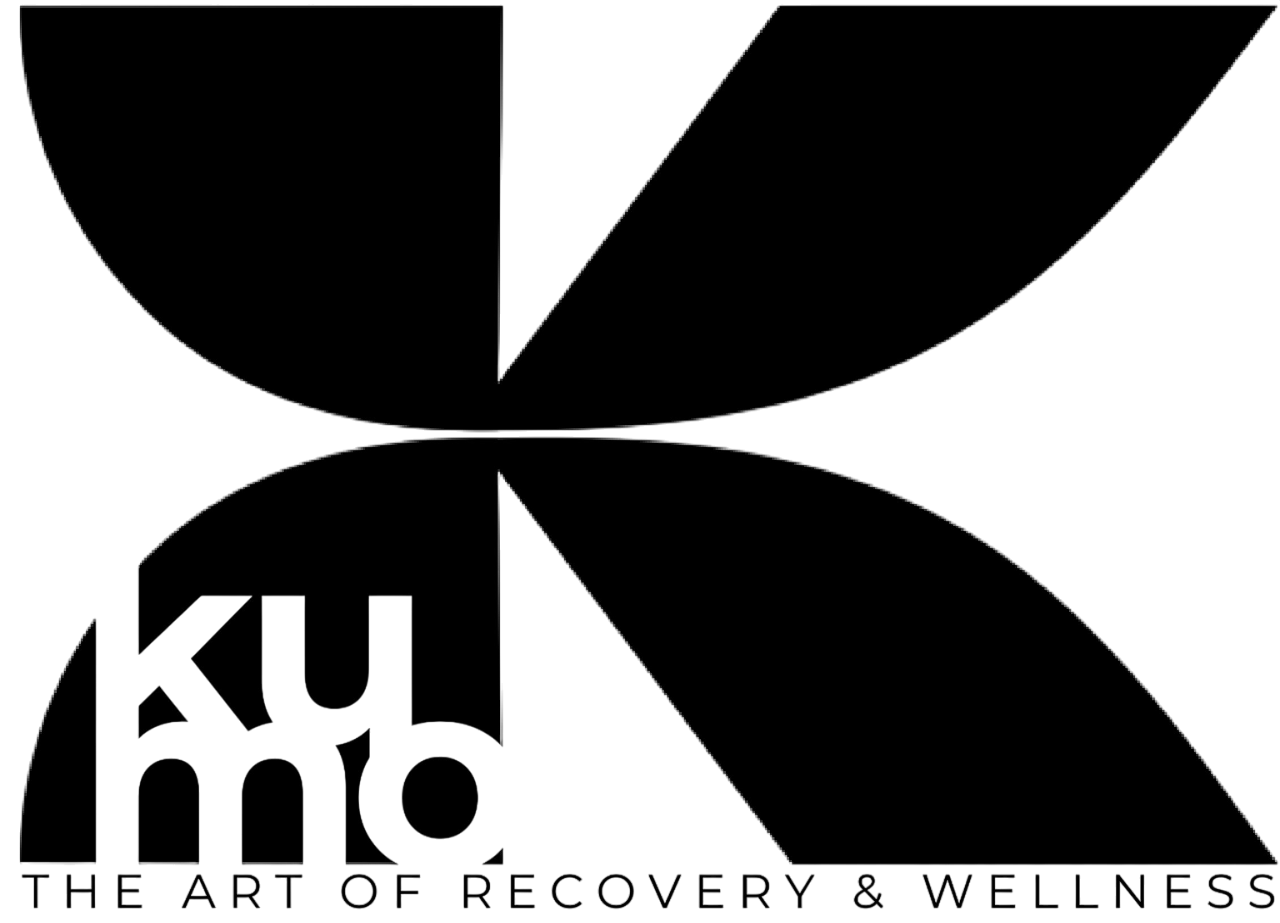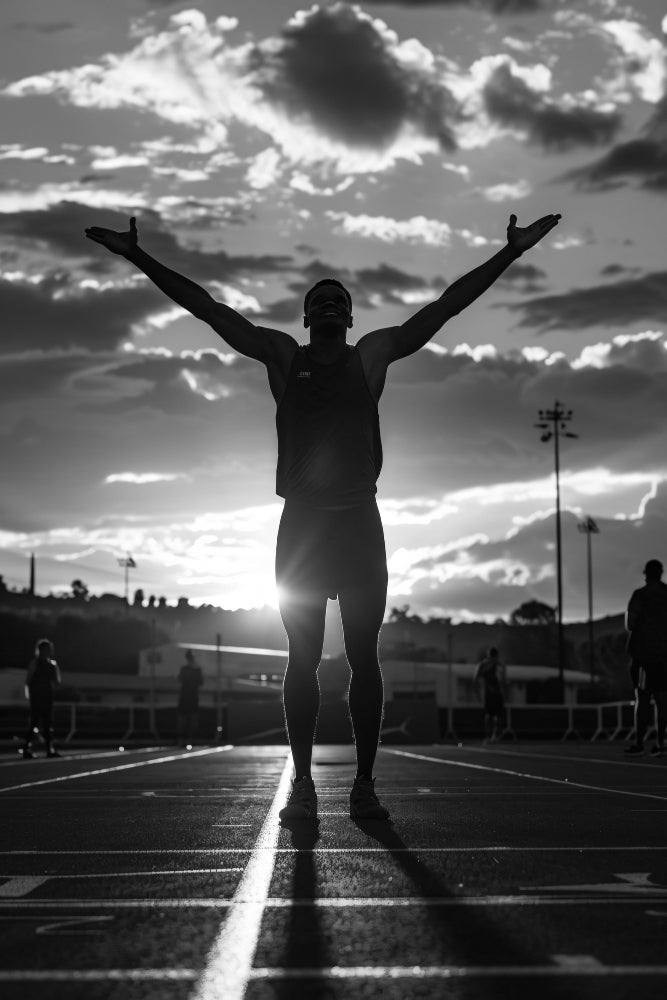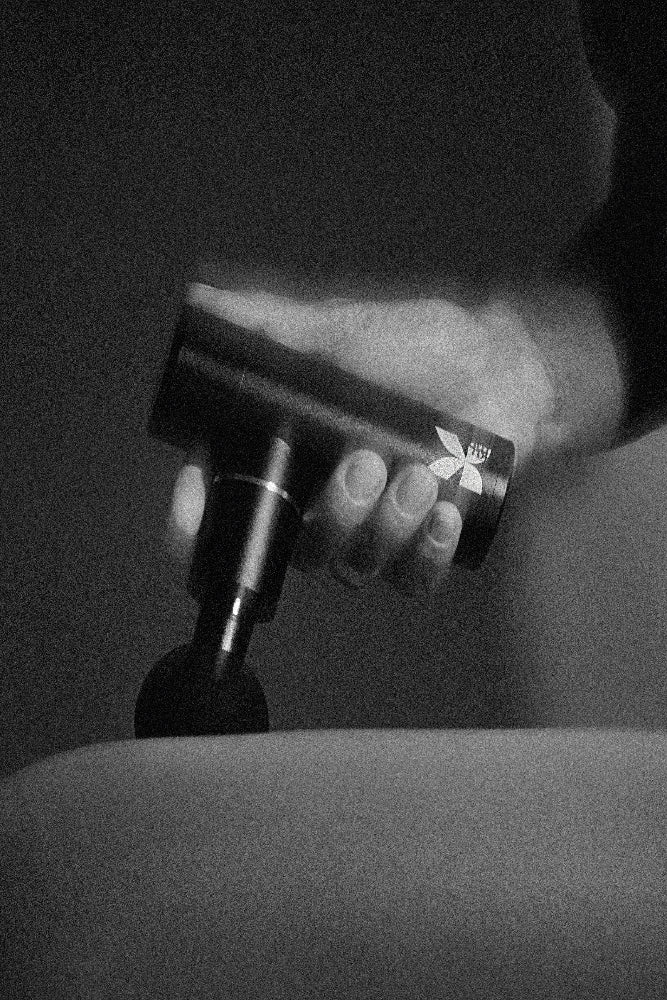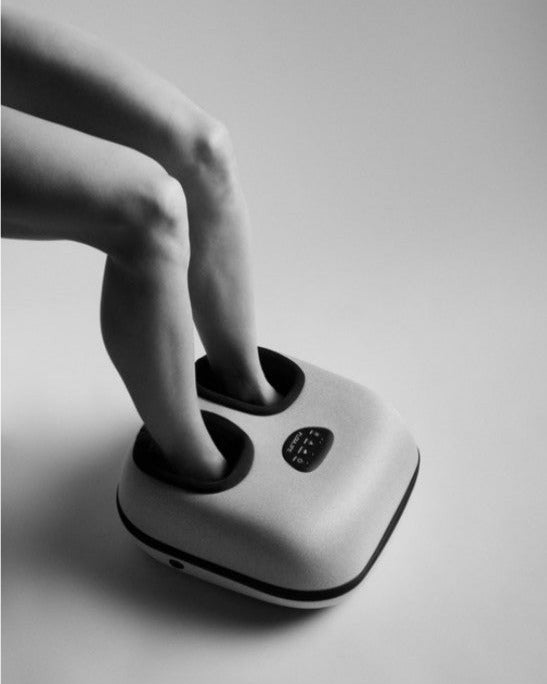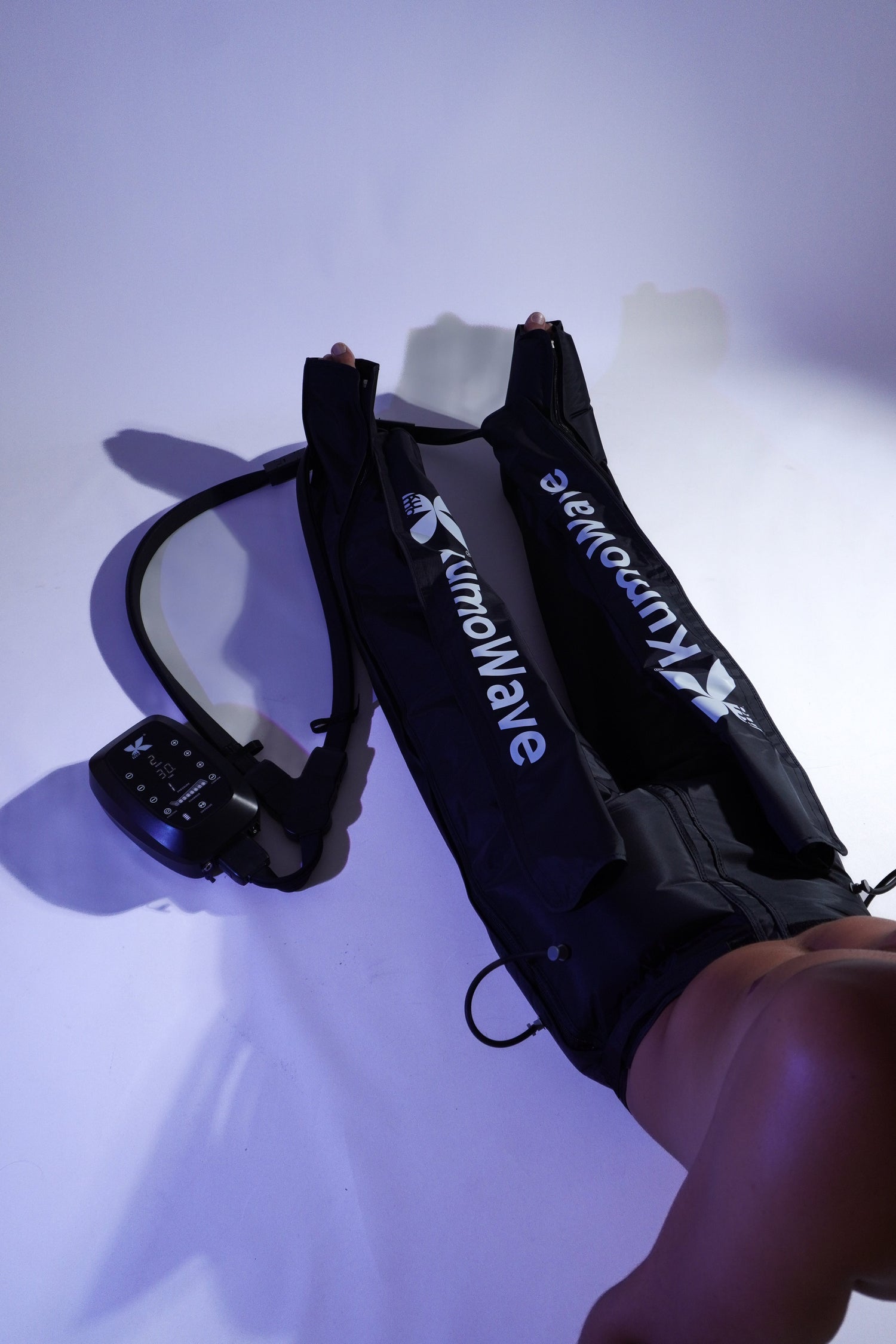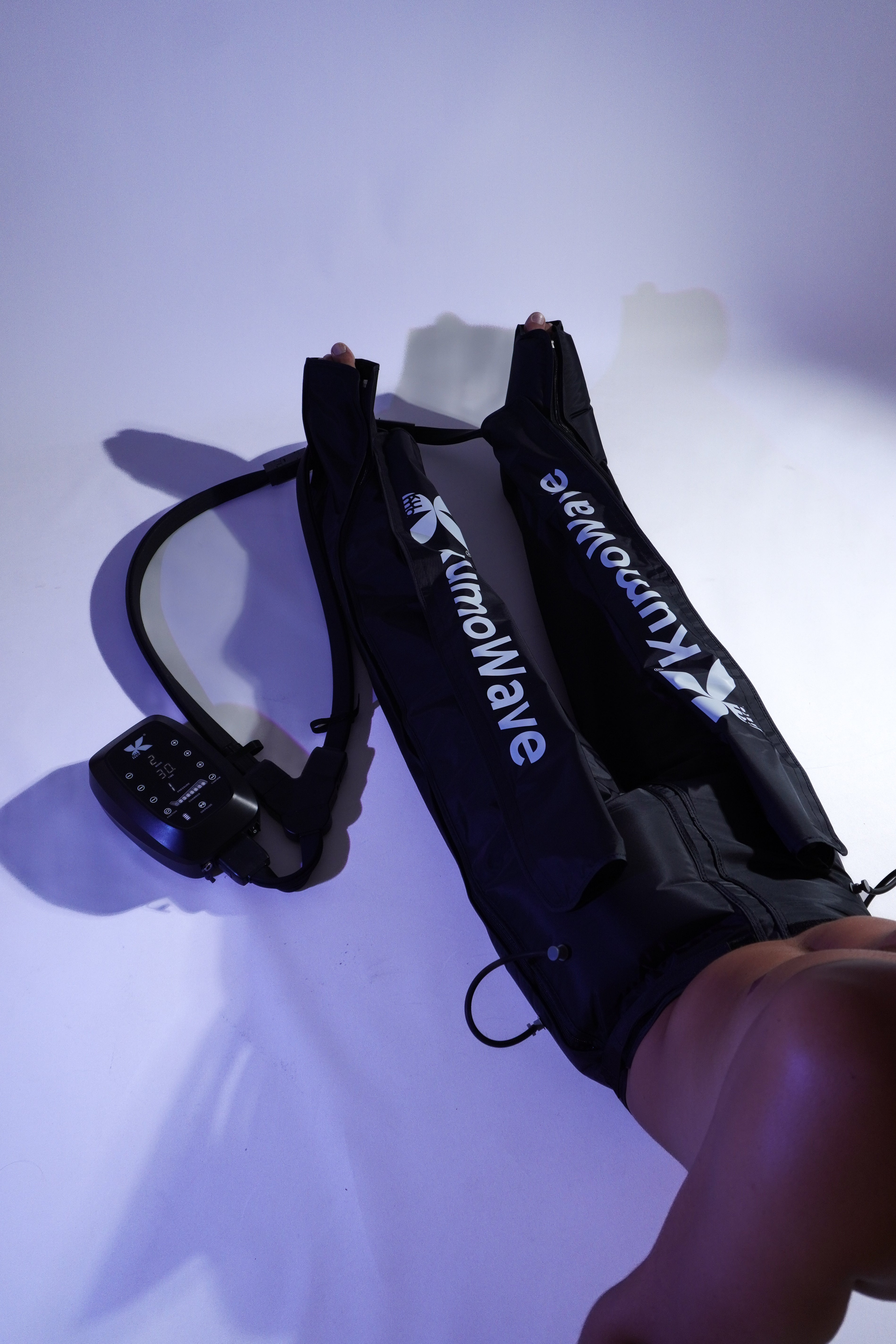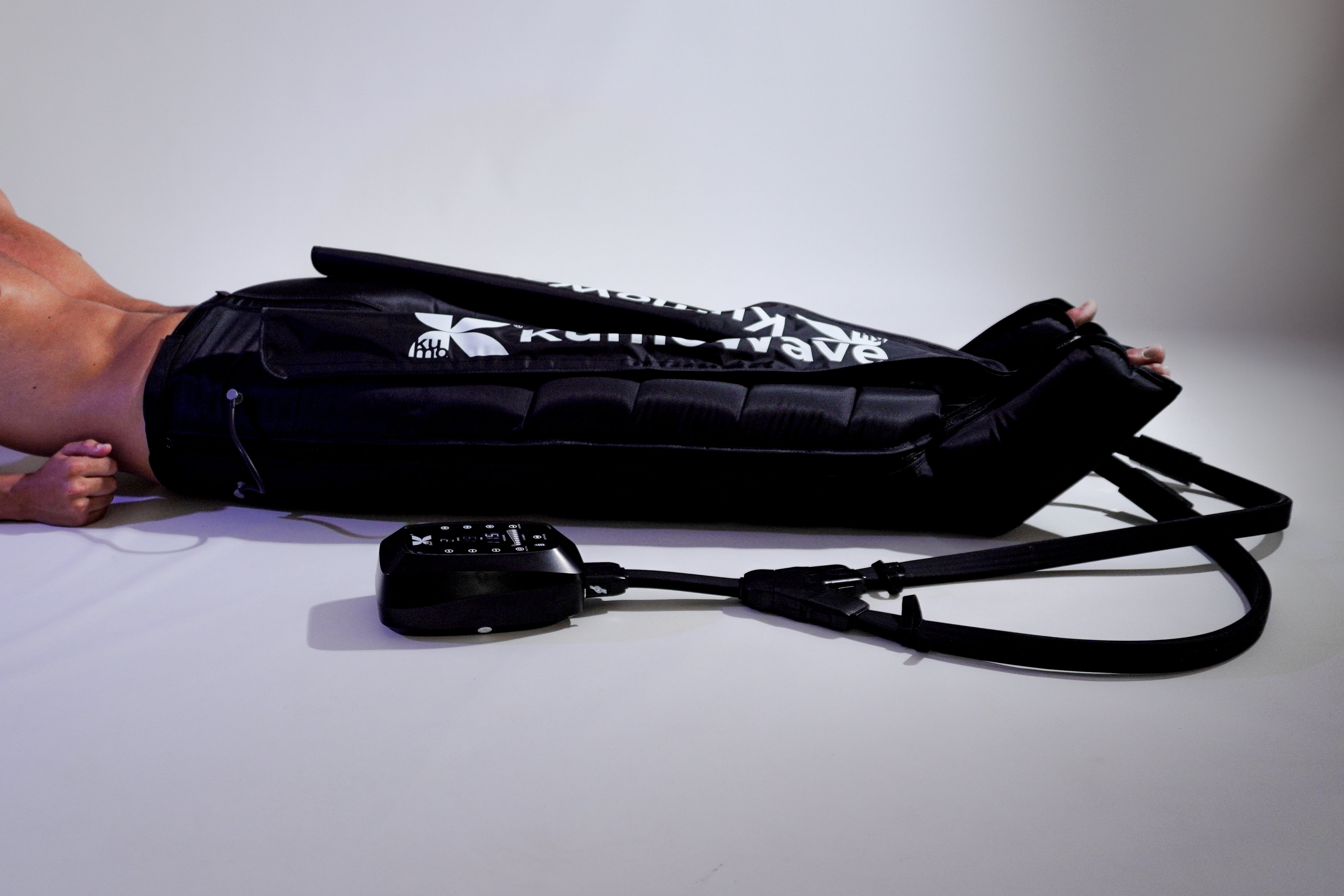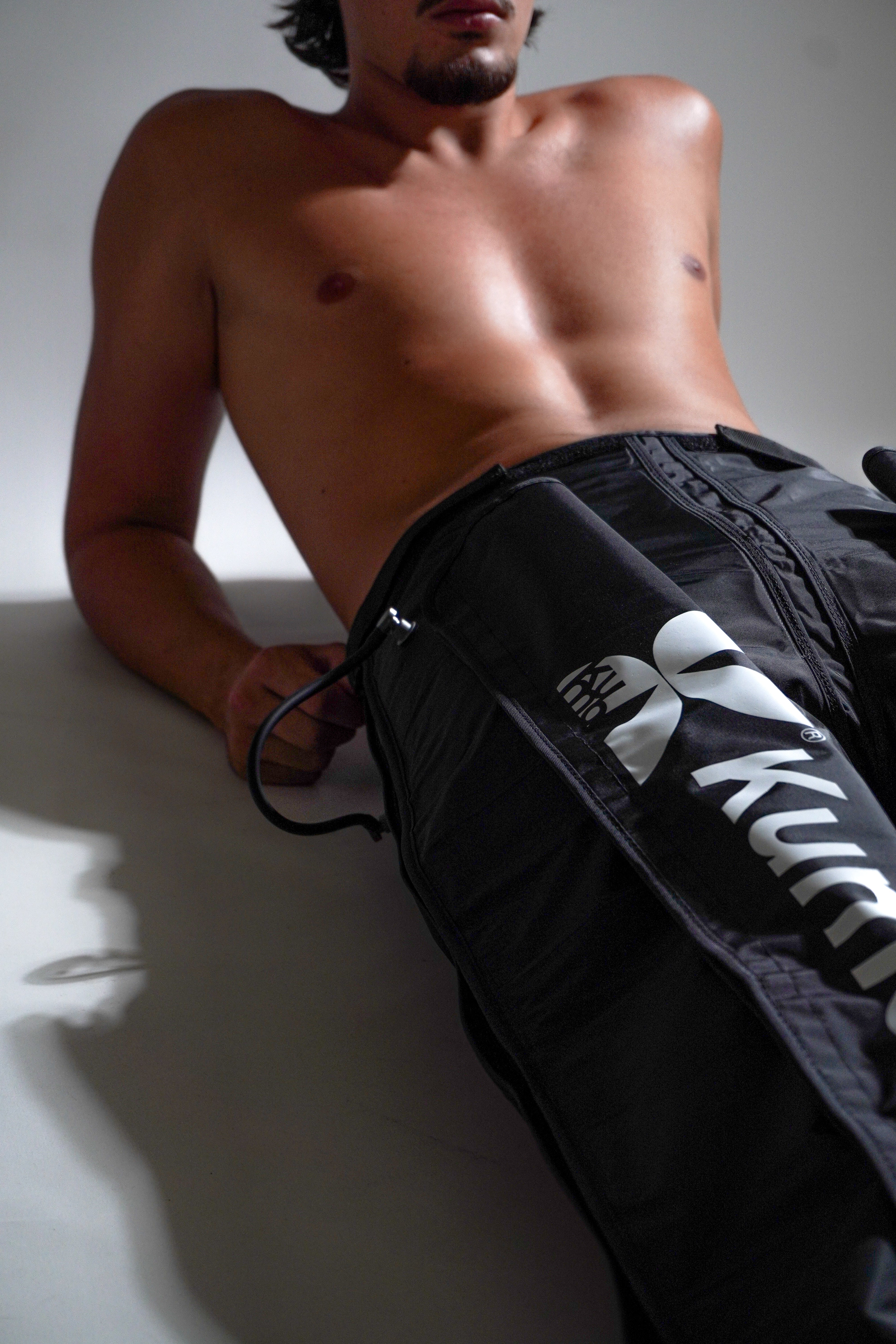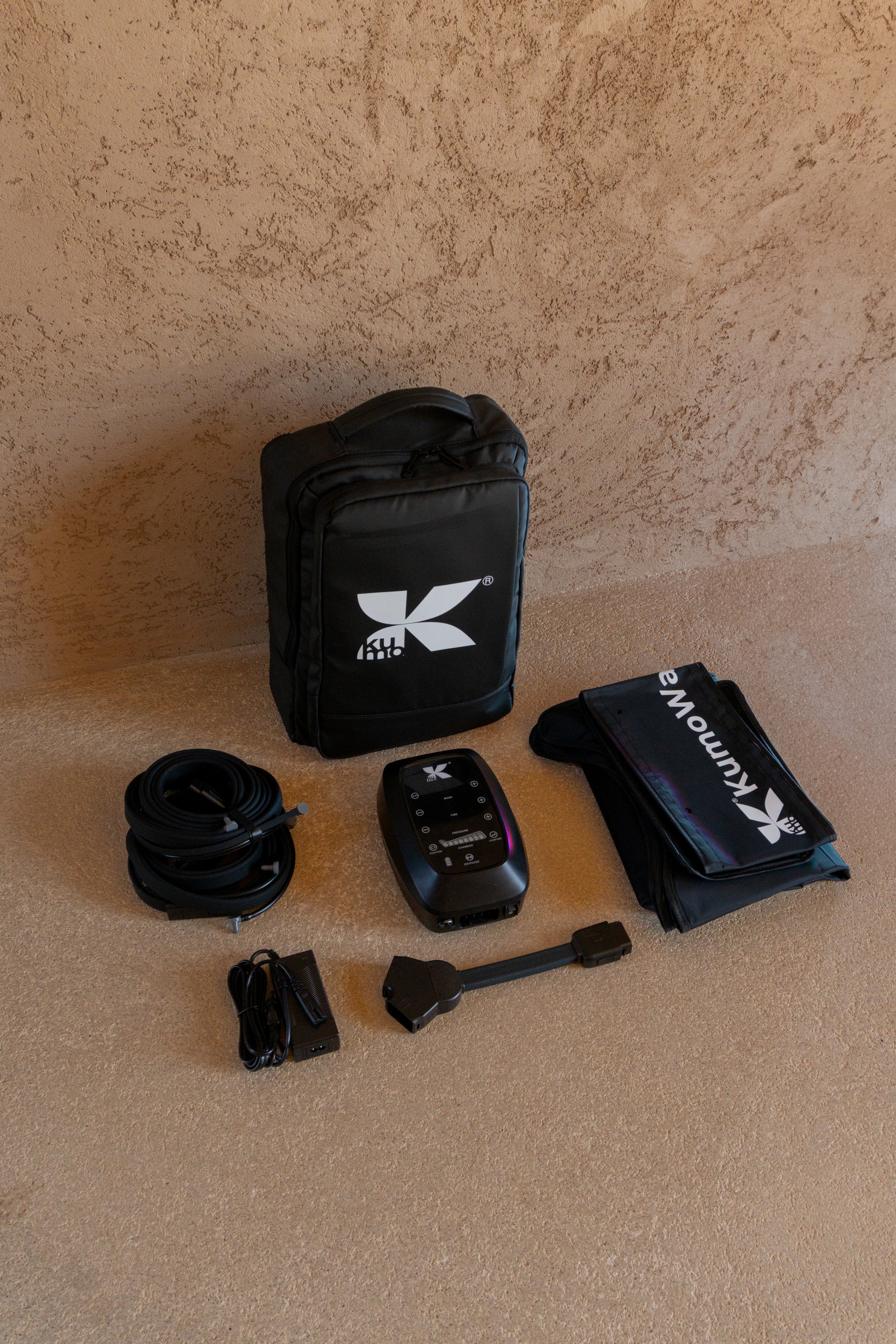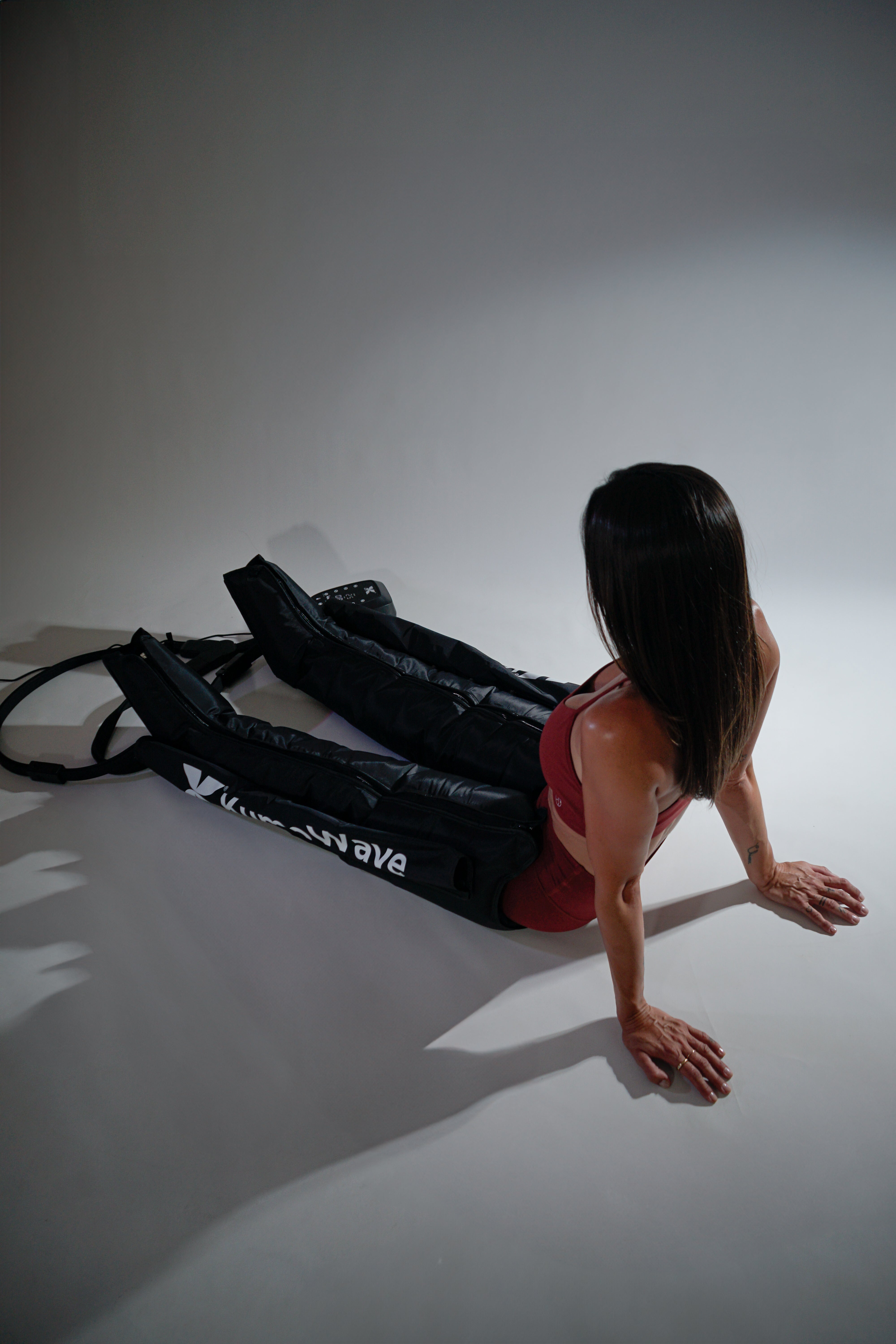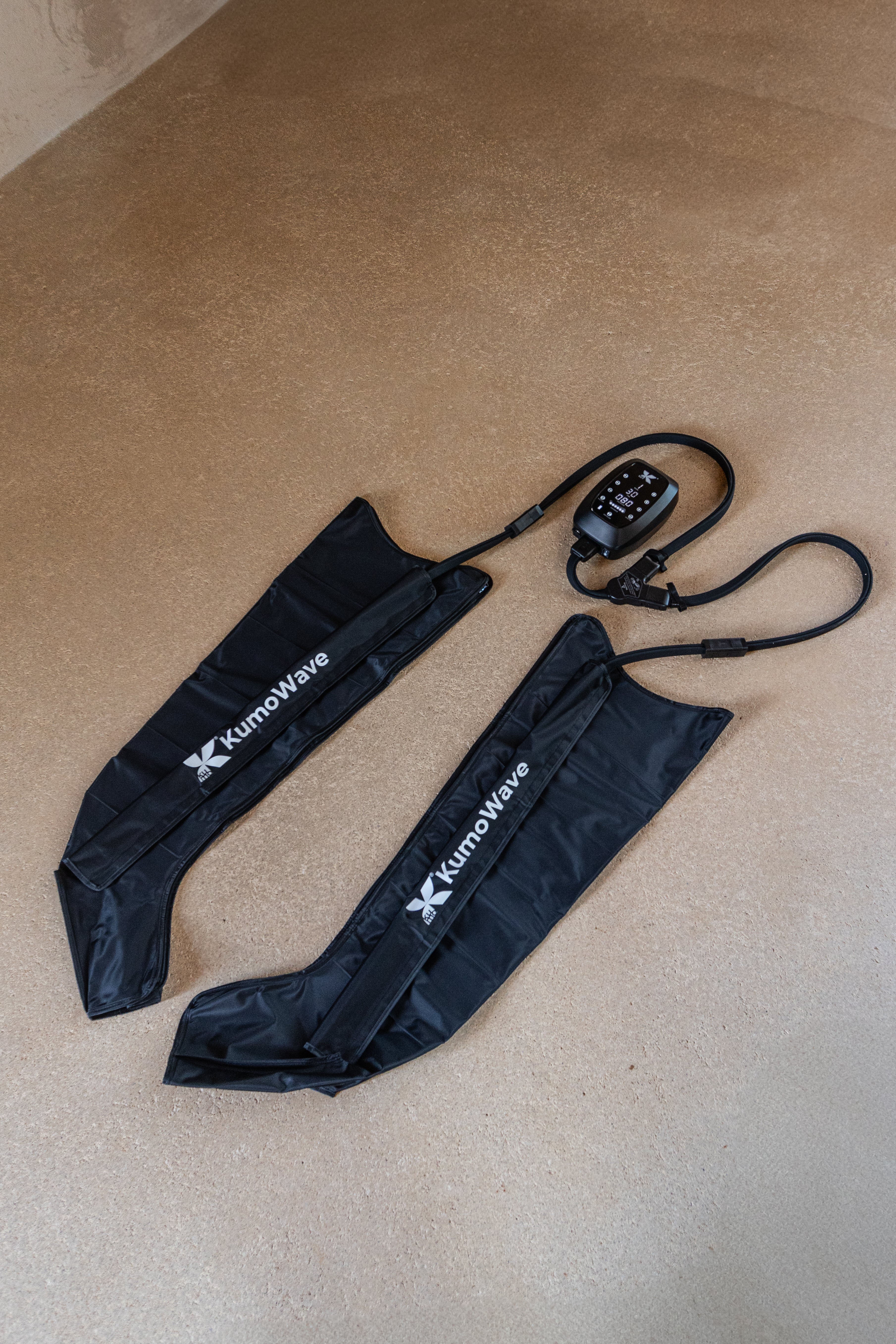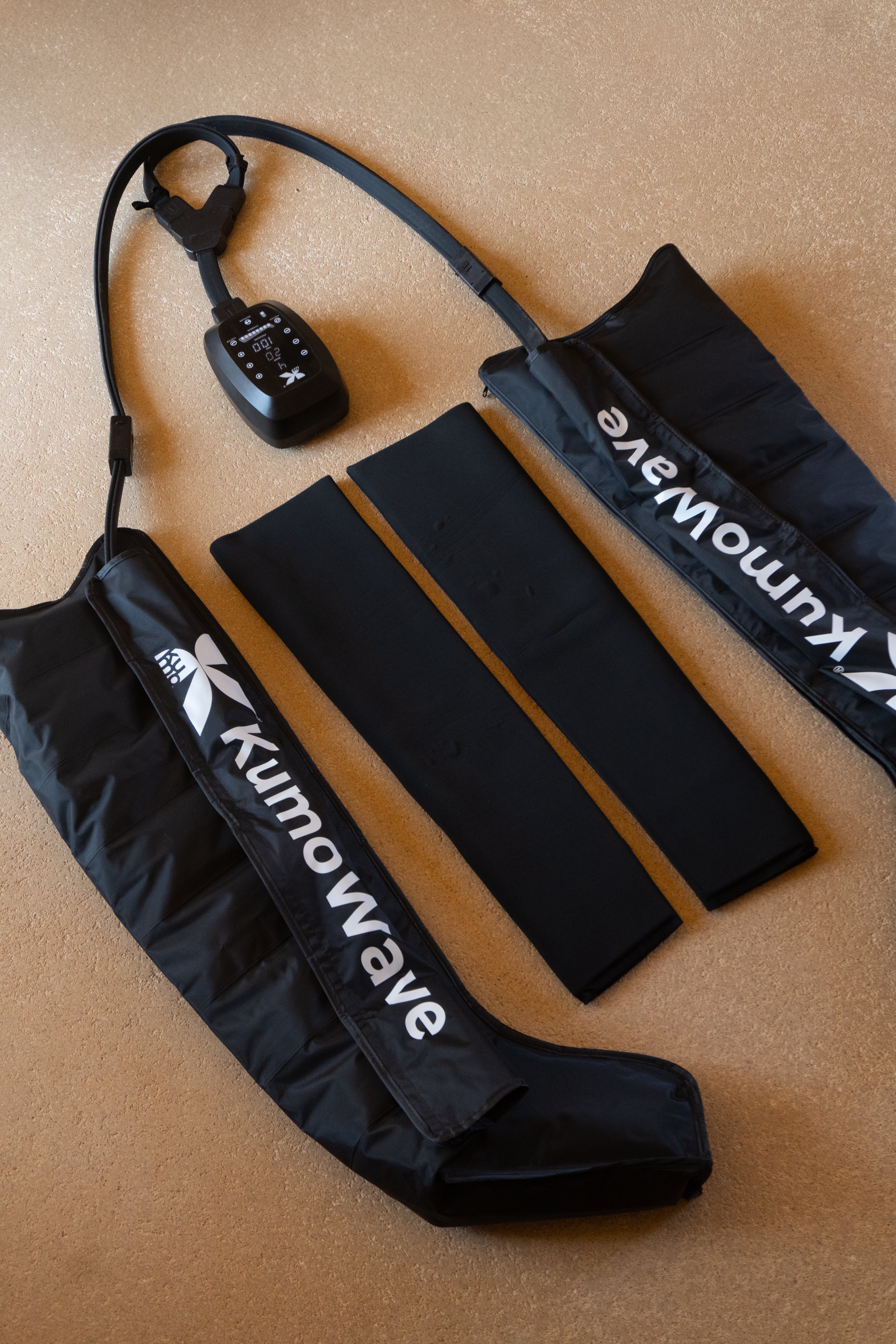Lymphatic drainage for athletes: a practical recovery guide. If you train frequently and are looking to reduce swelling, accelerate the elimination of metabolic waste, and feel lighter in your legs, here's what it is, how to apply it, and what tools to combine it with to see results without complicating things.
Coming soon
- Facilitates the elimination of fluids and metabolites to relieve post-workout heaviness and inflammation.
- Use it after demanding sessions, long trips, or before competing to “activate” your legs.
- Key methods: manual drainage, pressotherapy, diaphragmatic breathing, red light and percussive massage.
- Evidence: Modest but useful benefits if integrated with sleep and training.
- 10–20 minutes well applied can make a difference in sensations and preparation.
| Aim | Recommended method | Indicative duration | When to use |
|---|---|---|---|
| Reduce inflammation and relieve leg pain | Pneumatic pressotherapy | 15–25 min | Post-training/competition |
| Activate before competing | Breathing + gentle drainage | 5–10 min | Preheating |
| Accelerate muscle recovery | Red light (PBM) | 8–15 min | Before or after exercise |
| Release tense points | Targeted percussive massage | 5–8 min | Post-workout or easy days |
What is lymphatic drainage and why is it important for athletes?
Lymphatic drainage is a set of techniques that promote the flow of lymph, the fluid that transports waste, proteins, and immune cells. In athletes, it helps manage temporary edema and the feeling of heaviness after intense exertion or travel. An efficient lymphatic system helps "cleanse" tissues, keeps volume under control, and can improve the perception of recovery.
Unlike deep tissue massage, traditional lymphatic drainage is gentle and rhythmic. It can also be achieved with pneumatic compression, diaphragmatic breathing, and gentle muscle contractions that act as a peripheral "pump." The key is to promote fluid return without causing further damage.
Potential benefits in performance and recovery
Reduction of local edema and inflammation
The accumulation of interstitial fluid after high-impact or eccentric workouts increases the girth and perceived stiffness. Drainage can shorten this "heavy period" and improve range of motion in the following hours. It doesn't replace rest, but it helps you arrive the next day feeling less stressed.
Elimination of metabolites and relief of DOMS
Moving lymph and venous return promotes the clearance of exercise byproducts. Meta-analyses on compression show small to moderate improvements in delayed muscle soreness and strength 24–48 h post-exercise, a context where drainage is especially useful (Marqués-Jiménez et al., 2017) PubMed .
Immunity, stress and nervous system
Modulating the efferent lymphatic system and focusing on breathing activates the parasympathetic system: more "recovery mode," lower heart rate, and better sleep. This creates the context for protein synthesis and tissue repair.
Drainage does not replace training, nutrition or sleep: it enhances them.
Drainage methods and practical tools
Manual lymphatic drainage (MLD): gentle technique
Long, light, rhythmic strokes toward lymph nodes (groin, popliteal fossa, armpit). Useful for ankles and knees after running. Ideal for 10–20 minutes, pain-free. For a clinical description of MLD and its general indications, see this Cleveland Clinic guide: Manual Lymphatic Drainage.
Pneumatic pressotherapy: sequential compression
Boots with chambers that inflate in segments promote venous and lymphatic return. They're comfortable, reproducible, and effective for stressed legs. If you're looking to integrate this technology into your routine, explore our pressotherapy boot options.
Active movement and diaphragmatic breathing
- 5 minutes of very gentle pedaling or walking.
- 2–3 minutes of 4‑6 breathing (inhale 4 s, exhale 6 s) with hands on abdomen. Both act as a physiological “pump” that pushes lymph toward the collectors.
Red light therapy (RLT)
Red and near-infrared LED photobiomodulation can improve mitochondrial function and recovery. A meta-analysis (2018) reports benefits in performance and post-exercise soreness when dosed correctly (Vanin et al., 2018 ). For home use, discover our LED light therapy .
Focused percussive massage
Brief, targeted application to "wake up" the muscle pump, without overdoing the pressure. Work from distal to proximal (calves → hamstrings → glutes) for 30–60 seconds per area. A practical tool is the KUMOPulse Air massage gun for quick post-workout sessions.
How to integrate it into your training week
- After high loads: 15–25 min of pressotherapy + diaphragmatic breathing.
- Technique days or easy runs: light manual drainage 10–15 min.
- Pre-competition: 5–8 min of activation (breathing + soft percussion), without fatigue.
- Long trips: 10 min of mobility + compression at destination to normalize volume.
- Adequate hydration and sodium enhance the effect; avoid tight-fitting clothing after the session.
If you have cardiovascular conditions, thrombosis, active infections, or recent surgeries, consult a professional before applying compression or manual techniques. You can write to us for guidance from KUMO .
Evidence and Limits: What Science Says
The recovery literature indicates modest but consistent improvements when combining strategies. Post-exercise compression shows small to moderate reductions in DOMS and improved strength recovery at 24–48 h (Marqués-Jiménez et al., 2017) PubMed . Photobiomodulation has demonstrated positive effects on performance and soreness when applied at the appropriate dose and timing (Vanin et al.,
- PubMed .
Manual lymphatic drainage is safe and useful for managing edema, although in high-performance sports, the magnitude of the effect varies depending on the discipline, load, and Cleveland Clinic protocol. Conclusion: integrate these techniques as a complement, not a substitute for smart training, nutrition, and sleep.
Common mistakes and good practices
- Avoid high and rapid pressures: the lymphatic system responds best to gentle and rhythmic stimuli.
- Don't overdo it: 10–25 minutes well executed can beat endless sessions without focus.
- Correct order: distal → proximal and always towards main nodes.
- Separate from heavy strength sessions: schedule drainage after or on recovery days.
- Record sensations and perimeter (ankle/calf) to objectively monitor progress.
15-minute express plan
- 2 min of diaphragmatic breathing (4‑6) lying down.
- 3–5 min of gentle pedaling or walking.
- 6–8 min of leg pressotherapy (medium pressure, sequential mode).
- 2–3 min of light percussive massage on the calves and hamstrings (30 s per area).
- 1 min of ankle and hip mobility.
- Hydrate with water and a pinch of salt if you have sweated a lot.
Adjust your schedule based on your workload and schedule. If you prefer guided protocols or help choosing a technology, contact us here: Support Team .
Frequently Asked Questions
How long does it take to notice the effects of lymphatic drainage after training?
Many athletes notice lighter legs and less tension between 30 minutes and 2 hours after a drainage or pressure therapy session. Circumference reduction (swelling) can be observed on the same day in mild edema. If the load was very high or there is marked microdamage, delayed-onset muscle soreness (DOMS) relief is usually partial and progressive within 24–48 hours. To maintain benefits, incorporate 2–4 weekly sessions in high-load blocks and adjust the duration according to individual response.
Is lymphatic drainage the same as sports massage?
No. Lymphatic drainage uses gentle, rhythmic maneuvers aimed at returning fluids to the lymph nodes; sports massage is usually deeper and focuses on muscle tissue and fascia. If you're looking to reduce inflammation and relieve heaviness, prioritize drainage; if the goal is to release tension points or movement restrictions, combine it with percussive massage or myofascial techniques. During competition weeks, avoid aggressive stimuli and choose gentler approaches.
Does pressotherapy really help eliminate lactate and recover?
Pressotherapy improves venous and lymphatic return, which can accelerate metabolite clearance and reduce the sensation of leg stiffness. Meta-analyses of post-exercise compression show small to moderate reductions in soreness and strength recovery at 24–48 h, although the effect on blood lactate does not always translate immediately into performance. Use it as a supplement after intense sessions, for 15–25 minutes at moderate pressure, and combine it with mobility and breathing.
Does red light (LED) accelerate muscle recovery?
Photobiomodulation (red and near-infrared light) can improve mitochondrial function and modulate inflammation. A meta-analysis (2018) found improvements in performance and reduced post-exercise soreness when applied pre- or post-workout at appropriate doses (PBM, PubMed ). In practice, 8–15-minute sessions on targeted muscle groups, 1–2 times daily using load-bearing blocks, are a good starting point. Review devices and protocols in our LED therapy .
To remember
- Lymphatic drainage reduces swelling and heaviness after intense exercise or travel.
- It combines techniques: breathing, gentle movement, pressure therapy and red light.
- Practical dosage: 10–25 minutes, moderate pressure, distal to proximal.
- Evidence supports modest but useful benefits in pain and recovery.
- Customize according to your schedule and feelings; record your response.
- Ready to integrate it into your routine? Discover solutions at KUMO or check out our pressotherapy boots and contact team .
